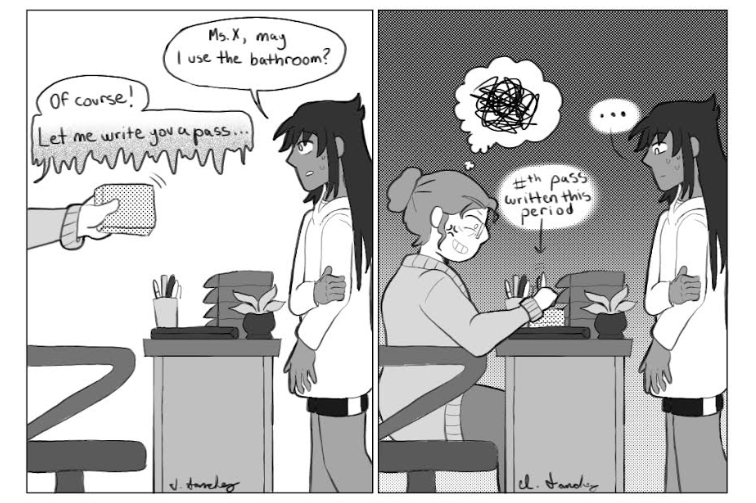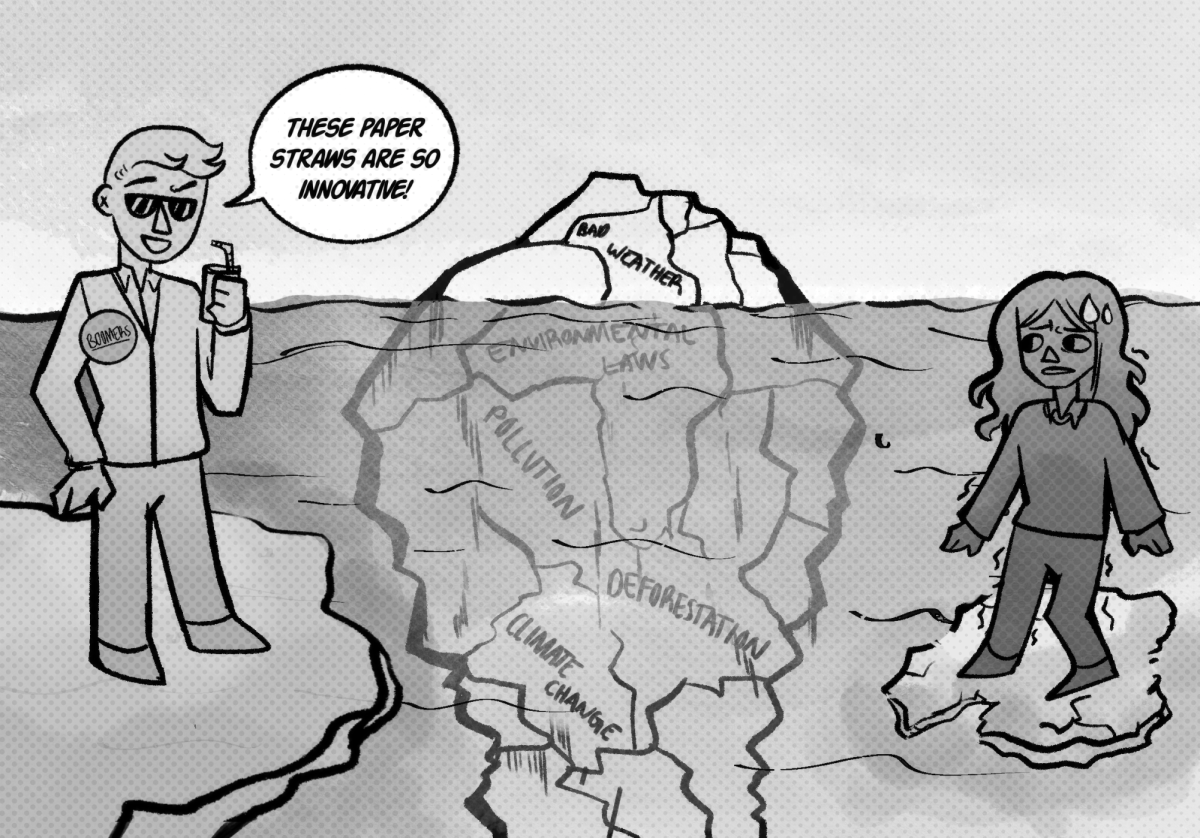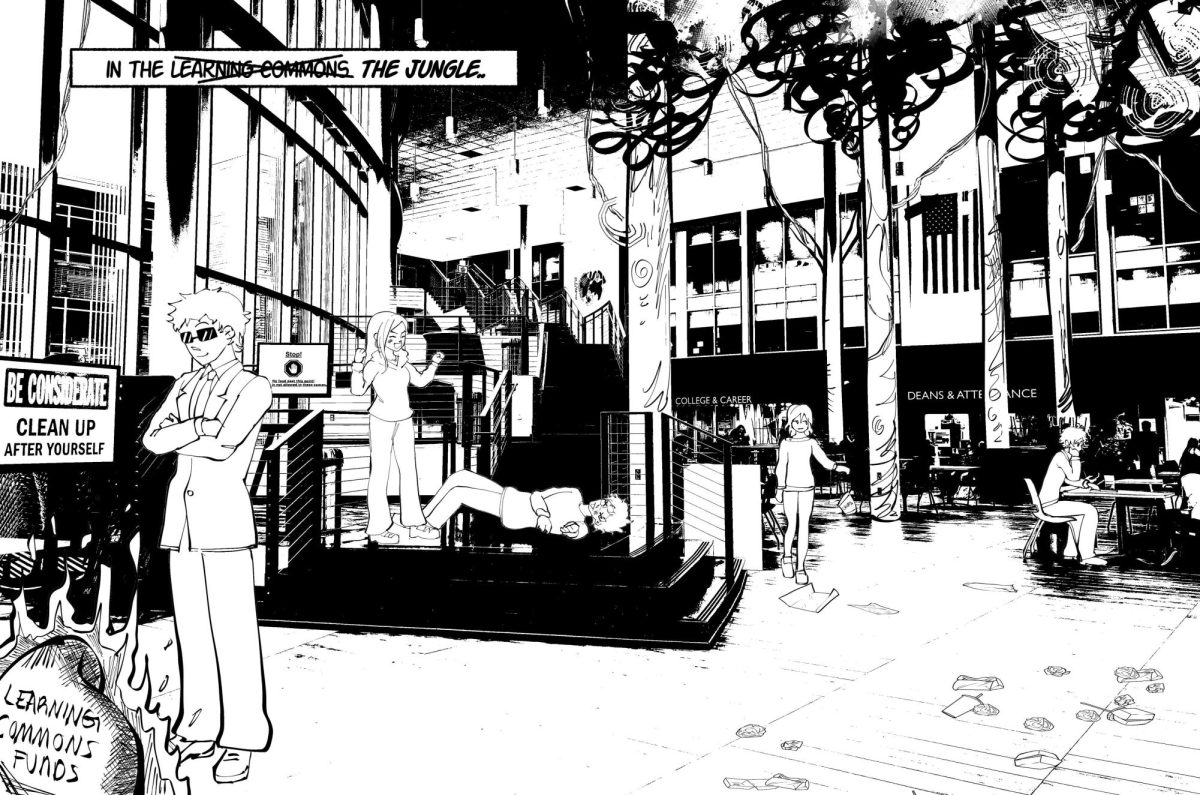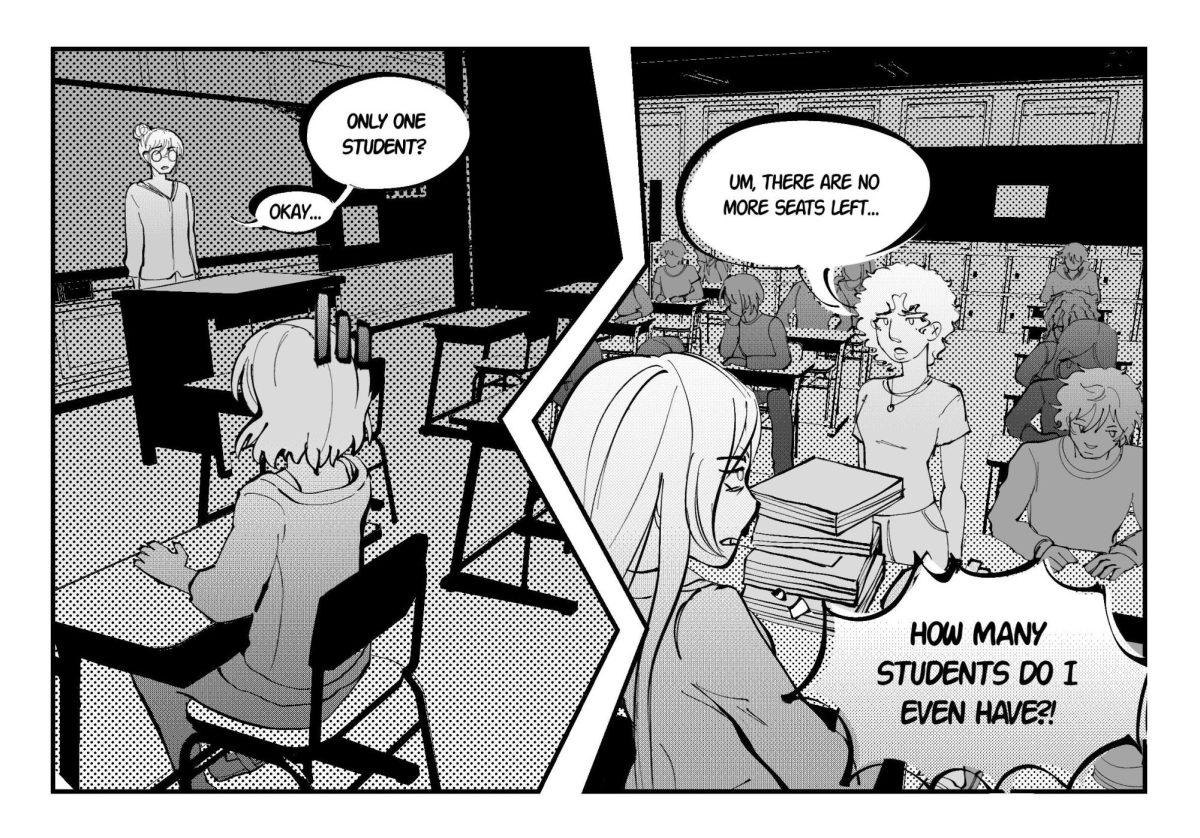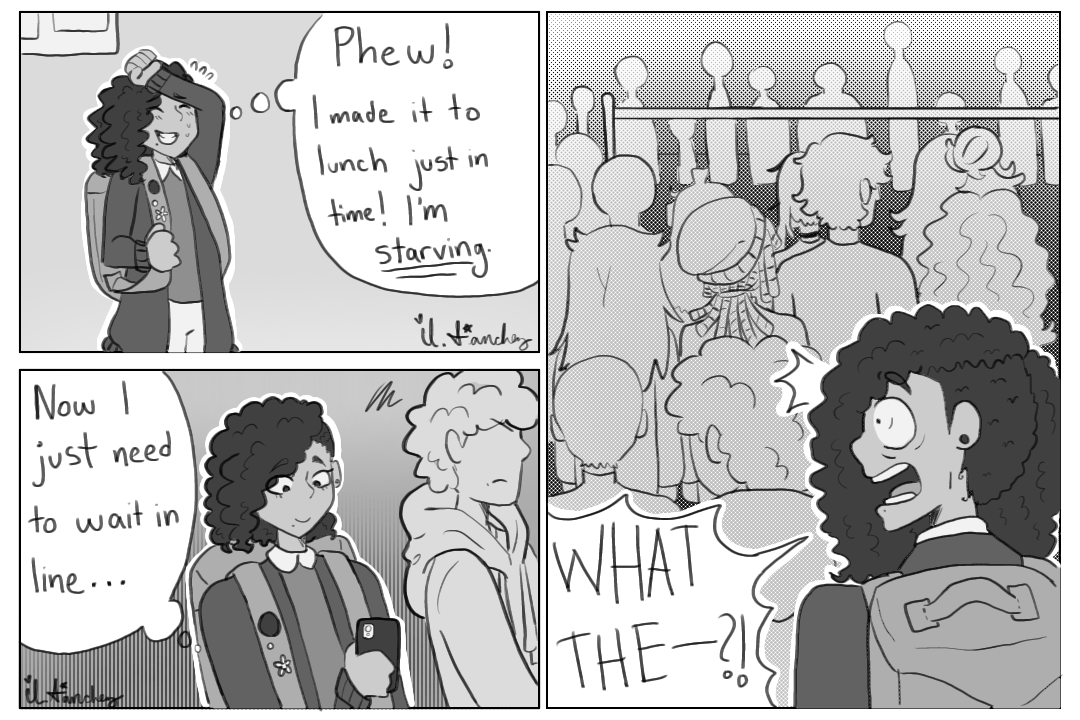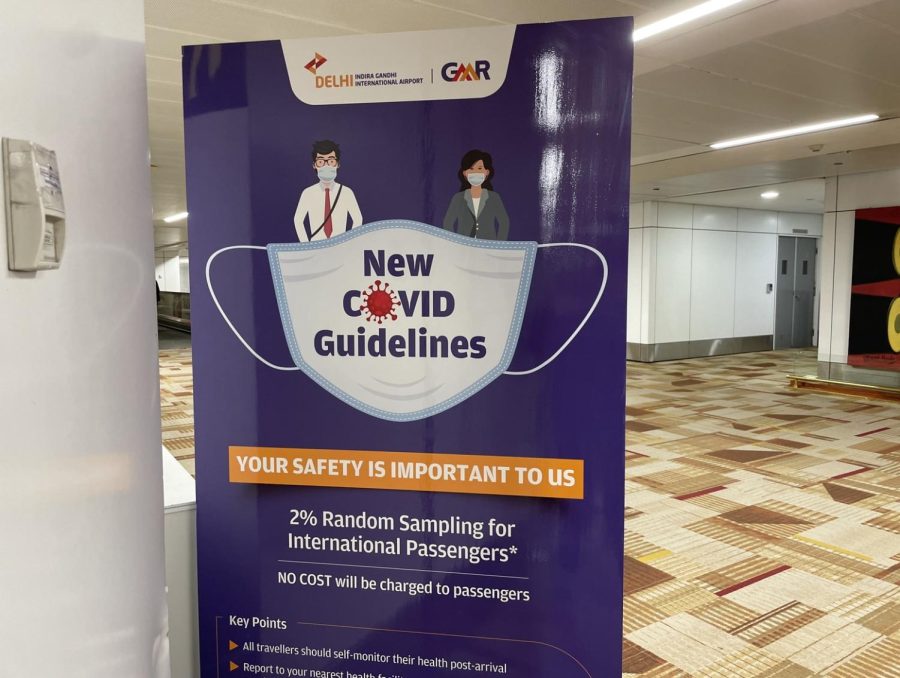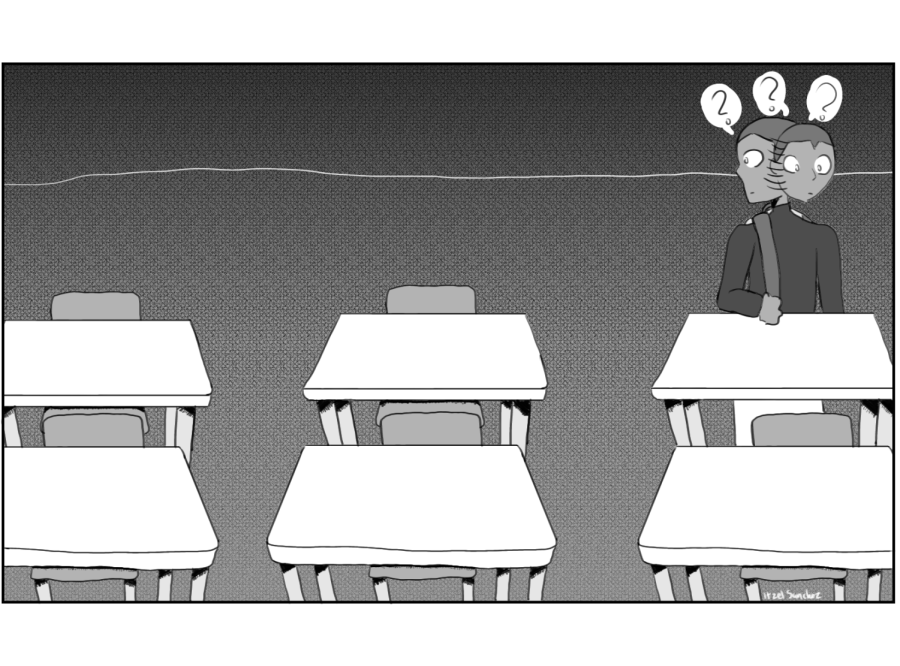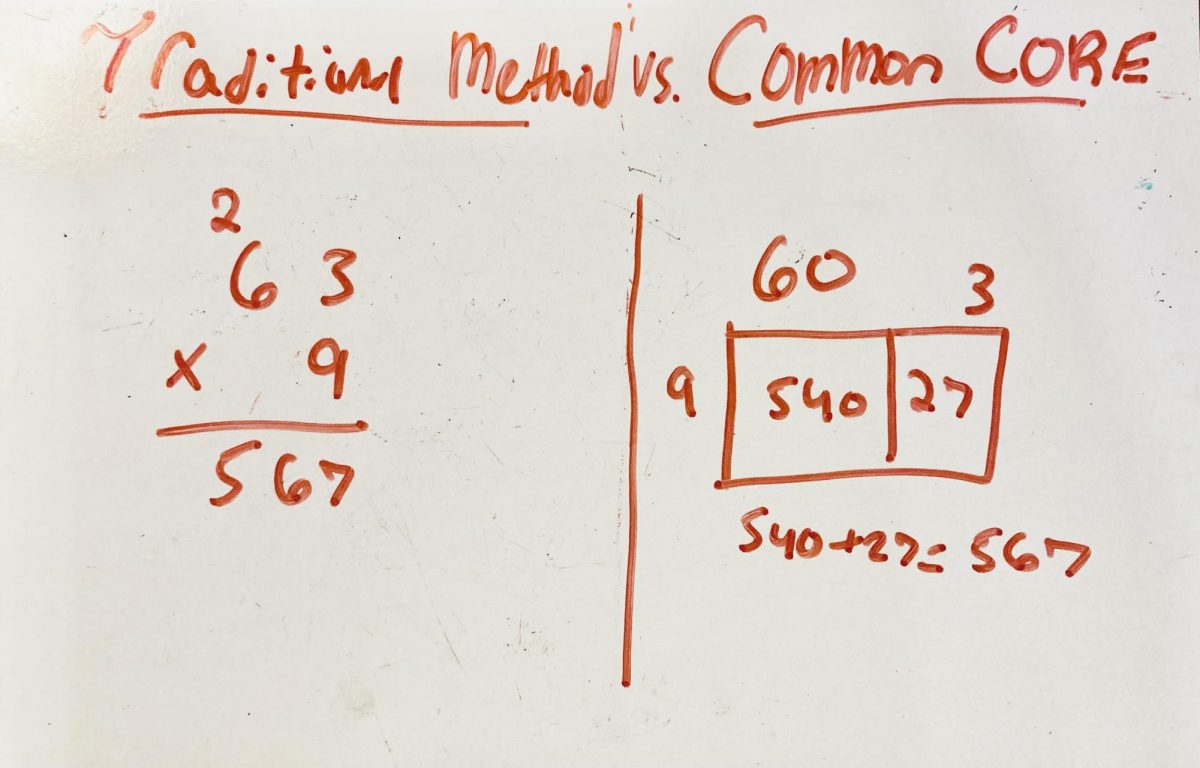There are many new changes to school procedures this year; however, the most impactful change is the implementation of green passes. Each time a student wants to leave their classroom, a teacher is required to write them a green pass listing the student’s name, destination, time of leave and teacher’s signature. This new system has many flaws.
First of all, the green passes take away from class time and interrupt lectures. If a student has to go to the bathroom, they disrupt the entire class since the teacher has to stop what they are doing to write a pass. This never used to be a problem with the old, reusable passes – students could just get up, take the pass and leave without forcing the entire class to pause.
The green passes are also entirely wasteful. From Aug. 18 to Sept. 21, 400 packs of passes were ordered, and with 50 passes per pack, that’s 20,000 passes purchased by the school. As a Green Ribbon school, we are “committed to ensuring energy conservation and environmental awareness… [and] being fiscally responsible to our taxpayers.” This commitment is not reflected in the new green pass policy.
The 400 packs of passes cost a total of $447, meaning the cost of one pack is $1.12. We know that 335 of the 400 packs were distributed to teachers in the Aug. 18 to Sept. 21 time frame, meaning our school requires roughly 16,750 green passes every month. That’s 167,500 passes in the 10-month school year – a total cost of $3,752 for a full year of green passes.
That’s a lot of money that could be spent on something else for the school. The $3,752 could go to upkeep of the bathrooms, better water pressure in the showers or overall school improvement.
On top of interrupting class time and being a waste of money, these green passes make it extremely embarrassing to ask to use the bathroom. We have to walk up to our teacher and ask for a pass, and then we stand there for what feels like hours while they fill in all of the information needed for a two-minute trip to the bathroom.
The most intriguing part is that hall monitors don’t even check the passes. The monitors might glance up at us when we walk through the halls, but they almost never actually stop us to read the passes. So what’s the point of filling it out if we could just grab a random slip of green paper and flash it at a hall monitor, knowing that they won’t even check it?
We do, however, recognize the importance of holding students accountable. There is no reason for students to be roaming the halls or spending half an hour in the bathroom avoiding lectures. Students should be in class, and if they aren’t, they should be penalized.
The question is, how are these green passes holding students accountable any better than the reusable passes did? The answer: they’re not. Although the reusable passes didn’t have a way to tell how long a student was out of class and if they had teacher authorization, they were more effective because they didn’t disrupt the teacher or the class.
The new green passes are taking away from class time and interrupting lectures. They are embarrassing, wasteful and ultimately pointless, so it’s exciting that next year DGS plans to implement digital passes rather than the green passes.
Each classroom will have a QR code that students can scan with their phones or computers and then they can leave the class. This new programming will let students know when they have been away from class for too long and also can be altered so that teachers can prevent students from leaving class too often.
It will be interesting to see how this new policy plays out next year. All we can hope is that the QR codes are more effective and less wasteful than the money-draining, interrupting and embarrassing green passes.

